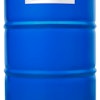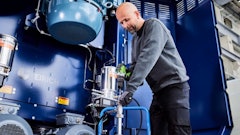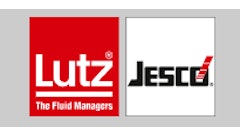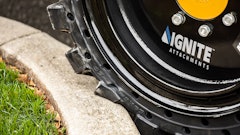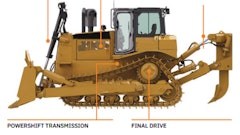Anyone who regularly works with small gasoline engines knows the basics of how to keep them running - change the oil regularly and keep the air filters clean and you're well on your way. But not everyone is aware that how you manage the oil and fuel you use in your four-stroke workhorses can have a significant impact on machine performance.
The lifeblood of your engines
Without oil to lubricate and cool them, engine parts would get too hot and eventually melt together to cause catastrophic engine failure. But will just any lubricant do?
In a word, no. The first rule of thumb to follow when choosing an engine oil is to use whatever is specifically recommended by the engine manufacturer. This can always be found in the owner's manual.
The American Petroleum Institute (API) issues guidelines for API Service Categories. These guidelines are designed to help you choose the oil best suited for your type of engines. The latest engine oil service category includes the performance properties of each earlier category. The most current service ratings are SL and SJ category oils for gasoline-powered engines. It should be noted that these categories are different for diesel engines. The information in this article will refer only to gasoline engines.
Engine manufacturers will specify an API category oil but they won't usually mandate a particular brand of oil. There are many brands to choose from, and each might have varieties ranging from economy to premium.
"A high-quality motor oil is one that meets or exceeds the latest industry and OEM specifications for a specific application," says Thom Smith, technical director, branded lubricants with Valvoline. "A premium lubricant is one that meets additional specifications beyond the basic industry and OEM specs and/or provides superior performance. Premium lubricants in general provide superior oxidation resistance, superior cleanliness and reduced wear relative to lower-end lubricants on top of application-specific benefits."
In general, higher quality lubricants have higher performance standards and they also burn cleaner.
"SL oils provide the best high-temperature protection and meet more stringent emissions standards than previous ratings," says Mark Nelson, product service trainer for Briggs & Stratton. "You have to have high-quality additives [in the oil] to meet emissions standards. The better we meet emissions, the better our engines perform, which is also a benefit to the environment. It's a win-win situation."
Sources say it's the additive package in combination with the base oils that make a high-quality lubricant. The better lubricants won't break down as fast and won't leave as many deposits.
"One property of oil is to help seal the engine," Nelson explains. "When the oil breaks down, scoring starts to occur. Combustion pressure starts to bypass the piston and cylinder and ends up in the crankcase. Basically, you lose power because the engine doesn't have the necessary compression."
Over time, without proper maintenance, oils will break down and the lubricating properties diminish. Aluminum engine parts can become scored and galling occurs. This is a situation in which aluminum parts melt and form a buildup that prevents parts from moving, causing seizure.
"The junction between the connecting rod and the crankshaft gets the most stress," says Nelson. "When there is a broken connecting rod and scored crankpin on the crankshaft, these are telltale signs of insufficient lubrication."
How do you know if the oil you choose is high quality? Sources agree that following the engine manufacturer's recommendation and API Service Category guidelines is crucial, but so is choosing a name you trust. Also, price can provide a clue. The higher-priced lubricants often provide better performance, as the old adage, "You get what you pay for," applies here.
"While shopping at a major retailer, I came across a quart of SAE 30W oil with a service rating of SA," recalls Nelson. "After reading the back of the package, I chuckled as I discovered it's stated not to be used in any engine newer than 1930. Users need to ensure they're getting the right oil for their application. In most cases today, SL or SJ are the categories to stick with."
In addition to quality, the viscosity grade of the oil you choose is very important to engine performance because it refers to the oil's ability to flow. In warmer temperatures (anything over 40 degrees), you want to use a heavier oil (say, an SAE 30), because it's thicker and more viscous vs. a multi-grade oil like 5W-30 or 10W-30. This same oil, however, if used in the winter, will be too thick to easily coat engine parts and is also harder to start. So, in colder temperatures, it's necessary to use a thinner or multi-grade oil (5W-30 or 10W-30). Multi-grade oils don't thicken as much in colder temperatures and don't thin out as much in higher temperatures.
"In many instances, it's possible to use a multi-grade oil all year round," says Smith at Valvoline.
In some cases, synthetic lubricants can be a good choice for small gasoline engines because they perform well in any temperature range. The downside is they cost more, maybe as much as four times more for a quart.
Nelson notes for equipment that's used throughout the year, such as a generator or light tower, synthetic lubricants can be worth the extra cost because of the assurance they provide of proper lubrication and protection without the worries about keeping up with seasonal temperature changes.
Fresh fluids
While more flexible in varying temperatures, synthetic lubricants still require the same change intervals as organic, or mineral-based, oils.
"Most Honda General Purpose Engines recommend that the first oil change occurs at the 20- to 25-hour time frame and then about every 100 hours or once a year," says Joel Borowski, manager of technical operations for Honda Engines. "The oil should be changed more frequently in dusty or severe conditions."
He adds, "It's always recommended that the oil is changed when the engine is warm. This does two things: gets the contaminants that are in the engine suspended in the oil so they can be drained out and it allows for quicker and more complete oil drainage."
In between oil changes, it's a good idea to check the oil level frequently.
"I can't stress enough that rental businesses need to check the oil when a piece of equipment goes out and when it comes back in," says Nelson at Briggs & Stratton. "You need to make sure the oil is at the right level."
Borowski agrees, adding, "The rental business should ensure that the oil level is full when the customer takes the unit and that the customer knows how to check the level. The customer should know what oil is to be used in the engine if any oil needs to be added during the rental period. Oil weights should never be mixed in the engine. Using a different brand of oil is OK as long as it is the same weight."
Fuel concerns
While fuel producers do a good job of policing themselves in terms of meeting standards, there are things you can do to ensure the fuel you use is the highest quality and will provide the best performance.
Perhaps the most important point to remember with fuel is to use the freshest available.
"Fuel starts to degrade after about 30 days," says Nelson. "After that, the light ends of the fuel evaporate and when they're gone, all that's left are the heavy molecules. Then the fuel can't vaporize as easily. Fuel needs to vaporize because that's what actually makes it burn."
Old, stale fuel won't wreak havoc on engine parts the way low-quality oil will, but it will eventually gum up the carburetor, fuel line and fuel tank. Deposits build up, ultimately requiring parts to be replaced.
Less serious, but frustrating nonetheless is vapor lock, a phenomenon which occurs when fuel vaporizes too much, creating bubbles which clog the passageway to the carburetor jets, which then causes the engine to die. While not a permanent condition, vapor lock can frustrate a rental customer who rented a machine from you only to get it on the job and have the engine keep quitting.
Vapor lock can be largely avoided by ensuring that fresh fuel is used in the engine at all times. Gasoline producers automatically change the fuel formula as the seasons change to accommodate for the vaporization rate in different temperatures. In the summer months, for example, fuel companies supply additives which suppress the vaporization rate. Because of this, if you use summer fuel in the winter, there won't be enough vaporization for the fuel to burn. Likewise, winter fuel used in summer will vaporize too readily, creating the bubbles which cause vapor lock.
This isn't a huge issue for automobiles, since most people use their car often enough to necessitate frequent fuel changes. With equipment that might sit idle for months at a time, however, stale fuel can negatively affect machine performance and in turn, alienate customers.
"To prepare any engine for off season storage, the fuel tank should be filled with fresh fuel that has a fuel stabilizer added to it," says Borowski. "Once this fresh fuel is in the tank, the engine should be run for about five minutes to get the stabilized fuel into the carburetor. Once this is done, the warm engine oil can be changed and fresh oil poured into the engine for the storage period.
Nelson suggests that rental businesses also consider setting up a policy, much like rental car dealers do, in which a small surcharge is added to the rental which covers a fresh tank of gas upon return. In other words, your customers pay a couple of dollars more to avoid the hassle of having the gas up your equipment before returning it, and you escape the potential hazards of relying on customers to use fresh fuel in your equipment.
However you do it, for top performance, it's best to ensure the highest quality oil and fuel are used in your gasoline engines.


